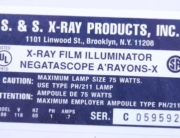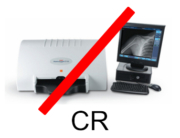The story goes that Henry Ford said that his customers could buy a Ford in any color, as long as it was black. While he was away from the business for a time, his son, Edsel, secretly produced a new model that was more stylish and came in a variety of interior finishes and exterior colors. Upon seeing this Ford of the Future, the senior Ford literately ripped it apart.
 Meanwhile, Alfred Sloan was consolidating lots of the smaller auto companies into something he called General Motors. He was creating a company with products to meet a wide range of tastes and pocketbooks. He took Ford to the cleaners. Eventually Ford followed suite and expanded its range of product offerings.
Meanwhile, Alfred Sloan was consolidating lots of the smaller auto companies into something he called General Motors. He was creating a company with products to meet a wide range of tastes and pocketbooks. He took Ford to the cleaners. Eventually Ford followed suite and expanded its range of product offerings.
Today, change is coming again to the car companies. Hybrids, electric and hydrogen, address the “how” of a car, but the real change is coming from those asking the “why” question. The tech companies are envisioning a future where people do not own cars. Cars will no longer be status symbols, but simply low-cost, highly efficient people and package movers. Any company will be able to build a car, but the profits will go to those firms that can most effectively provide a clean and reliable service.
Even today, it really makes more sense for me to sell our second car and use Uber or Lyft for the few times a week my wife and I need a car at the same time. Financially, I would save hundreds of dollars a year or more.
So in thinking about the x-ray dealer of the future, first consider these points:
- DR technology is coming down in price. In the not too distance future, we might see end-user prices of $10,000 or less.
- Does wireless DR really require dealer installation? Consider AED? Can a good YouTube video and a help desk replace on-site dealer installation?
- Is there any new technology in the pipeline that requires a dealer for sales, installation or service?
- Will margins continue to erode, internet selling increase, and installation/service become easier so that manufacturers can circumvent the dealer?
If our business was all about only selling new equipment, I think the answer would be “get bigger or get out.” However, the independent x-ray dealer brings other value to the “party”. Many not only service smaller communities but they often provide lowest cost solutions. They are willing to sell pre-owned solutions and also marry new technologies to the old. They are focused on putting together all available parts to solve the challenge posed by the customer, whereas the manufacturer only has its specific product line.
Looking outside of North America, I see a much different model today. “Full Service” medical products dealers are more common. Companies provide products and service for a much wider field of medical specialties and the x-ray division, while being important, is just one of many.
In one of former GE CEO Jack Welsh’s books, he talked about his policy of requiring each of his divisions to be either number one or two in their industries. If a division was number two, the question was could it become number one? If not, it was put on the auction block. If a division was number one, could it continue to grow at Jack’s required rate? If not, it was also sold.
Welsh told the following story about his imaging division. They were number one and no one could figure out how they could grow faster. At one of his “university” weeks, he posed this question to a guest lecturer who was a military strategist. The guest was quick to answer because this is the type of question he dealt with daily. His answer revolved around is how you frame the question. If you ask, “how can I become a larger x-ray company,” then the answer might be that it will be difficult. The cost to grow may not give you the returns you seek. If you change the question to “how can I become a larger medical equipment company,” then you have widened the field of growth. Measuring your business as a medical equipment company vs. as an x-ray equipment company may drop you from largest to smallest in your area of operation.
posed this question to a guest lecturer who was a military strategist. The guest was quick to answer because this is the type of question he dealt with daily. His answer revolved around is how you frame the question. If you ask, “how can I become a larger x-ray company,” then the answer might be that it will be difficult. The cost to grow may not give you the returns you seek. If you change the question to “how can I become a larger medical equipment company,” then you have widened the field of growth. Measuring your business as a medical equipment company vs. as an x-ray equipment company may drop you from largest to smallest in your area of operation.
I don’t believe our international friends ask this type of question in forming their businesses. Their issues are different from the ones we face in North America. However, I believe their solution is valuable for today’s independent x-ray dealer to consider.
Whether you elect to “go big” or “go small,” there are some easy ways to implement this strategy which, of course, is the topic of my next blog…and last in this series.








Interesting point. In my opinion the answer is some where in the middle.
We need to be big from financial point of view, in-house expertise, set up processes, knowledge sharing etc
but we need to be small from customer point of view, always available and to offer low cost creative solutions.
Good articles Dan. I see the exact same thing with int’l dealers. They handle a variety of products. Good idea for the local x-ray dealers in the US. If the markets for your product are shrinking, expand your products. Kinda’ simple.
Keep up the good blogging.
Jim
(Sent to our main email. Posted here by AMD.)